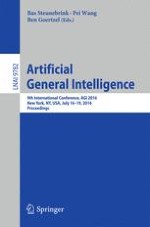This book constitutes the refereed proceedings of the 9th International Conference on Artificial General Intelligence, AGI 2016, held in New York City, NY, USA, in July 2016 as part of HLAI 2016, the Joint Multi-Conference on Human-Level Artificial Intelligence 2016.
The 24 full papers, 2 short papers, and 10 poster papers presented were carefully reviewed and selected from 67 submissions. AGI research differs from the ordinary AI research by stressing on the versatility and wholeness of intelligence, and by carrying out the engineering practice according to an outline of a system comparable to the human mind inSelf a certain sense.
